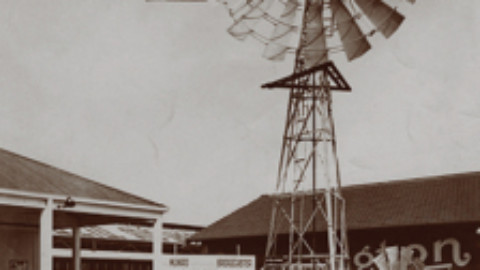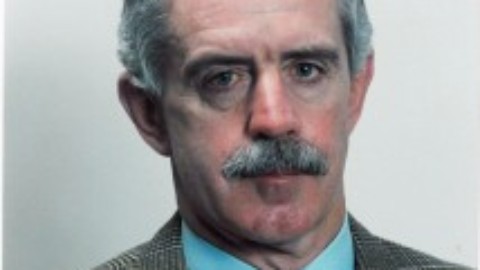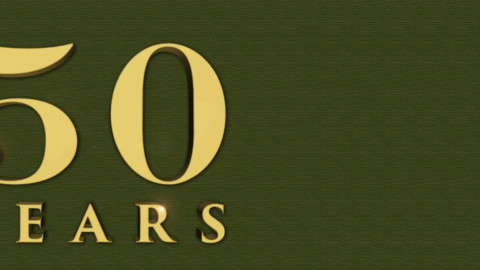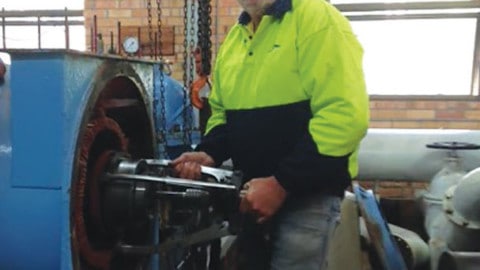With over 50 years experience in the pump industry, Bob Pullen has had a long and exciting career. From establishing Pullen Fluid Dynamics, acquiring Jay and Short Pumps and publishing the first ever Australian Pump Journal, his passion for the industry is evident. Bob shares his thoughts about his career, the industry today and why he’s just not ready for retirement.

Bob Pullen.
Starting out
In 1960, after completing the first year of a Technical College course in mechanical and electrical engineering, I applied for the position of cadet engineer with McPhersons Ltd at Ajax Pumps. I was anxious to join the workforce during the day and complete my studies at night, because I wanted to combine Technical Studies with daily hands-on, practical experience.
The program offered an interesting mix of workshop and engineering office training, and as a cadet, the industry immediately took my interest. It was (and still is) something that consumes and motivates me. After Ajax Pump Works factory training, I was transferred into sales, and the face-to-face experience is where the learning really began.
Passionate about pumps
What I like about the pump industry is the diversity. As the second most used machine in the world, you will find pumps in mining, food processing, waste disposal, fire protection, flood mitigation, irrigation and many, many more industries. Each application is a little different.
For example, mining demands an understanding of critical carrying velocity and wear resistance while food processing demands an understanding of hygiene and pump design that can be easily cleaned in place. Of course there are many more examples but the lesson is clear – each industry has its unique requirements and the pump engineer must have a broad knowledge.
A long and varied career
After Ajax Pumps, I joined FN Bethune (Pomona Pumps) as an Industrial Sales Engineer. Not long after I started there, R.J. (Bob) Moore from Kelly and Lewis was appointed the new General Manager.
Although I was probably too young, Mr Moore promoted me to Victorian Sales Manager and gave me a staff of three. Outside of my Victorian state responsibilities, I was sent to Gladstone Alumina Refinery to commission large slurry pumps, to Tasmania to commission mining dredge pumps, as well as many other responsibilities that gave me a look into life outside the office.
With the approval and encouragement of Mr Moore, I branched out into self employment and created Fluid Dynamic Engineering with Frank Muscroft. Together, we manufactured stainless steel milk transfer pumps for Kraft Foods and food handling pumps for Shepparton Preserving Company.
We also made a well-intentioned effort at publishing the very first Australian Pump Journal in July 1968. High on enthusiasm, but short of working capital, it lasted for only a few issues, proving that there is merit in having a business plan before starting a new venture, rather than just having high hopes. However, I’m delighted to see the current Pump Industry magazine succeed in providing a quality informative source of information and training.
After a few years, Frank Muscroft moved on, and Kelly and Lewis acquired Fluid Dynamic Engineering. It was then that I started a new venture, Pullen Fluid Dynamics. At Pullen Fluid Dynamics I continued with food handling and milk transfer pumps, but I also developed a range of corrosion resistant chemical pumps known as the Red Dart and a range of Australian designed and built submersible sewage pumps. Second only I think to Don Forrer.
Simpson Pope provided us with the electrical components while we developed the non-clog pump end, the motor stator body and the cover components. Marcel Herzig from Sulzer Pumps in Switzerland then joined us as our designer, and from there we were in a serious business supplying pumps to various Water Authorities around Australia, who all had high expectations of design and quality. The growth of Pullen Fluid Dynamics led to my next and most important development, which was my acquisition of the Sydney based Pump Company J.T. Jay in the early 1970s.
J.T. Jay, also known as Jay and Short Pumps, had a proud 100-year history and a top class reputation with the Sydney Water Board and NSW Department of Public Works. Jay and Short not only designed solid case and split case sewage pumps, but they had their own cast iron and bronze foundry.
The Jay acquisition provided the youthful staff at Pullen Fluid Dynamics with their own foundry, as well as a fully equipped machine shop. With a name change to Pullen-Jay Pumps and the introduction of submersible sewage pumps into the solid and split case sewage pump range, it didn’t take long before sales ballooned.
Heading overseas
Some of the products we built at Pullen Fluid Dynamics for Sydney Water were large 450mm vertical split case sewage pumps, so I saw the need for a manufacturing colleague with casting and machining capabilities that were beyond the Pullen Jay team.
After several visits to Malaysia, I negotiated a manufacturing and design agreement with Chung Khong Engineering in Ipoh. Marcel designed the casings and impellers in Australia, and Chung Khong cast and machined the large components in Malaysia. We then assembled and tested the complete pumps back in Australia. Back in 1970 this was probably one of the earliest joint offshore manufacturing agreements entered into by an Australian Company.
Chung Khong also had their own range of Ni-hard metal pumps for the Malaysian tin mining industry, and I was fortunate to learn by watching them work in the mines. While I didn’t know it at the time, my knowledge and respect for the Chinese owners of Chung Khong was to serve me well in my later pump manufacturing pursuits in Mainland China, over twenty years later.
As the ‘new kid on the block’ in the Australian sewage pump market, it didn’t take long for the UK based pump company Allen Gwynnes to show an interest in Pullen Jay Pumps. Allen Gwynnes, Amalgamated Power Engineering, purchased Pullen Jay Pumps in 1975 and I was required to leave the pump industry because I signed a non-compete clause in the agreement.
During this enforced absence I tried a number of different career options: motor vehicle manufacture, cranes, superannuation planning, fibreglass, transmission, and even a brief venture into catering, but none of these satisfied me, so inevitably I came back to pumps.
Drawn back to pumps
It was a breath of fresh air when Colin Montgomery of Duraqual Pumps and Bill Smith of Kelair Pumps gave me the opportunity to rejoin the pump industry.
At Duraqual Pumps, I learned about the different high pressure piston pumps and diaphragm metering pumps. From chemical dosing to water jet cutting of concrete, the Duraqual experience was a whole new world for me.
At Kelair Pumps, my role as ABS (Germany) Product Manager saw me travel to Sweden, Germany and Ireland, as well as around Australia. We enjoyed great success with the large ABS range of water and sewage pumps offered to government authorities both in Australia and New Zealand. I remain indebted to Bill Smith for this opportunity as it was an exciting time for all of us at Kelair after we successfully launched this large product range.
After Kelair Pumps, I moved on to Nossiter Pumps. Ben Nossiter offered me a consulting role, as he wanted to expand his business into export opportunities. Indirectly, this resulted in me making contact with Lanshen Pumps in Nanjing China, who, ironically, had been manufacturing ABS pumps under licence at the time I was ABS Product Manager.
The pieces of my jigsaw puzzle quickly fitted together, as my early Malaysian Chung Khong Chinese experience allowed me to seamlessly adapt to the mainland Chinese business protocol, which is very different from Australian and European business practices.
My various interlocking relationships from Pullen Jay, Chung Khong, Kelair, ABS Germany and Lanshen opened the door for me to a design and manufacturing agreement with Clearet Environmental Technology in Suzhou China to produce a range of small submersible sewage and drainage pumps. I also assisted in setting up a polyethylene rotomolding factory in a Suzhou factory, which now manufactures its own polyethylene pump stations for the local Chinese market.
The (possible) final chapter of my story is my present endeavour at SPE Polytech, manufacturing polyethylene package pump stations in Australia. I look back on the 55 years since I first joined Ajax Pumps and I am very grateful for the opportunities that the Australian pump industry and some key people have presented to me.
Changes in the industry
I think pump designs are now more efficient, refined and OHS conscious, and electrical controllers are much more sophisticated. We now also have access to a wider database of basic application knowledge through the internet, but sadly there is generally a lack of product knowledge, which is no doubt brought on by lack of training. The problem of lack of training can be directly related to the reduction in Australian manufacturing, as the importation of pumps from Asia has had a major impact, and this is a topic that raises heated debate.
In terms of suppliers I think there are too many importers for our population of 23 million. My personal involvement in offshore manufacturing has given me an inside view from both sides of this issue, but it cannot be denied that it has had an impact on the larger Australian pump manufacturers, resulting in less research, development and staff training.
Career highlights
There are two memorable moments that stand out in my career. The first was the bittersweet creation of The Australian Pump Journal in 1968. This venture had all the exuberance and energy of youth, but without the wisdom and experience that only comes in later years.
The second highlight was the acquisition of Jay and Short Pumps in my early thirties. The feeling of being a part of their long history and past heritage, combined with the energy of my youth was a great experience. J.T. Jay showed me where others in the pump industry had been before us, walking the same road and designing and building similar pumps.
It’s all about the people
Three people stand out as mentors in my career: Bob Moore of FN Bethune (Pomona Pumps), Colin Montgomery of Duraqual Pumps and Bill Smith of Kelair (ABS Pumps).
Bob Moore threw me in the deep end, but stayed around long enough to teach me to swim. He made me a state sales manager at 23 years old and he gave me the experience to supervise site commissioning of large mining slurry pumps all around Australia.
As Colin Montgomery’s General Manager, I learned the art of ultra high pressure pumping along with his wide range of metering pumps. He also gave me extensive travel opportunities in Australia and Asia.
Lastly, Bill Smith gave me the opportunity to rejoin the Australian pump industry after my enforced non-compete absence, following the sale of Pullen-Jay. As his ABS Product Manager, I visited ABS pump factories in Sweden, Germany and Ireland. We also introduced the Blivet package sewage treatment plant into Australia and Indonesia.
I’ve also worked with many other personalities in the industry. Without a doubt, John Link is one of the most colourful and interesting people in the pump industry. During one of my many visits to my colleagues Chung Khong Engineering in Malaysia, John arrived one day riding a motorcycle through the jungle, with his long grey beard flowing in the wind and multicoloured Malaysian Batik crash helmet on his head. He certainly made my conservative grey business suit, white shirt and blue tie seem drab by comparison. After time at Pullen Jay, Brian pritchard went on to own and operate B-Line Pumps.
Significant industry developments
Without a doubt, the most significant development that I have witnessed is the sad, but inevitable, demise of major Australian pump manufacturers.
From as far back as the 1960s and 1970s, Australia has suffered from a small population base compared to Europe, America and Japan. Australian manufacturers could not enjoy the economies of scale afforded to their overseas competitors. This meant that research and development was difficult to fund against a lower sales volume.
Lowering the rate of import duty was a factor. People have argued that this was a necessary step for the overall Australian economy to produce a level playing field, and that the loss of some Australian pump manufacturers along the way was collateral damage. In later years, the emergence of Asia, with the benefit of low cost labour and rapidly improving technology, finished off the decline.
The news is not all bad though, as innovative, specialised design and manufacturing is the future challenge for the Australian pump industry, and Australians are versatile and flexible thinkers. During my many visits to China, I have witnessed the ability of the Chinese to experiment and perfect the art of manufacturing, but I have also witnessed their limitation in the flexible use of their individual components to produce an even wider range of pumps. Australians have no such limits in their imagination of multiple practical installation possibilities. So here is an opportunity for Australia to be flexible and innovative.
The greatest challenge facing the pump industry today is to think outside the square. We need to find a better way to do what has already been done and find existing markets that are not well serviced and then fill the void. If the pump is the second most used machine in the world, then the opportunities are widespread- if you can recognise them.
Life today
These days I’m working at SPE Polytech where I manufacture polyethylene underground package pump stations. At 72 years old, I get my fair share of friendly criticism from my retired friends, when I am continually unable to accept their invitations for bowls or golf. However, I am proud to say that SPE Polytech have sold into all Australian states and my products are now used by many prestigious pump companies. They have been exported to New Zealand, New Guinea, Vanuatu, Fiji and the Solomon Islands.
Outside of the industry, my wife Denise and I are about to celebrate our 50th wedding anniversary. In our spare time we enjoy going to restaurants and live theatre, as well as seeing our sons Grant and Craig, their partners Carolyn and Cindy and our four grandchildren Ben, Ally, Josh and Brooke. We are now watching the grandchildren prepare for university which is a real treat. Ben is already in his first year of a Business/Law Degree and Josh is about to enter Business/Marketing. So who knows, maybe they are two new ‘Pump Men’ in the making.
If I could give any advice to pump industry professionals today, it would be that while training and knowledge are prerequisites, your attitude, commitment, service and ability to go the extra distance are just as important. Never stop learning, and don’t just make the pump industry a job – make it a career.














